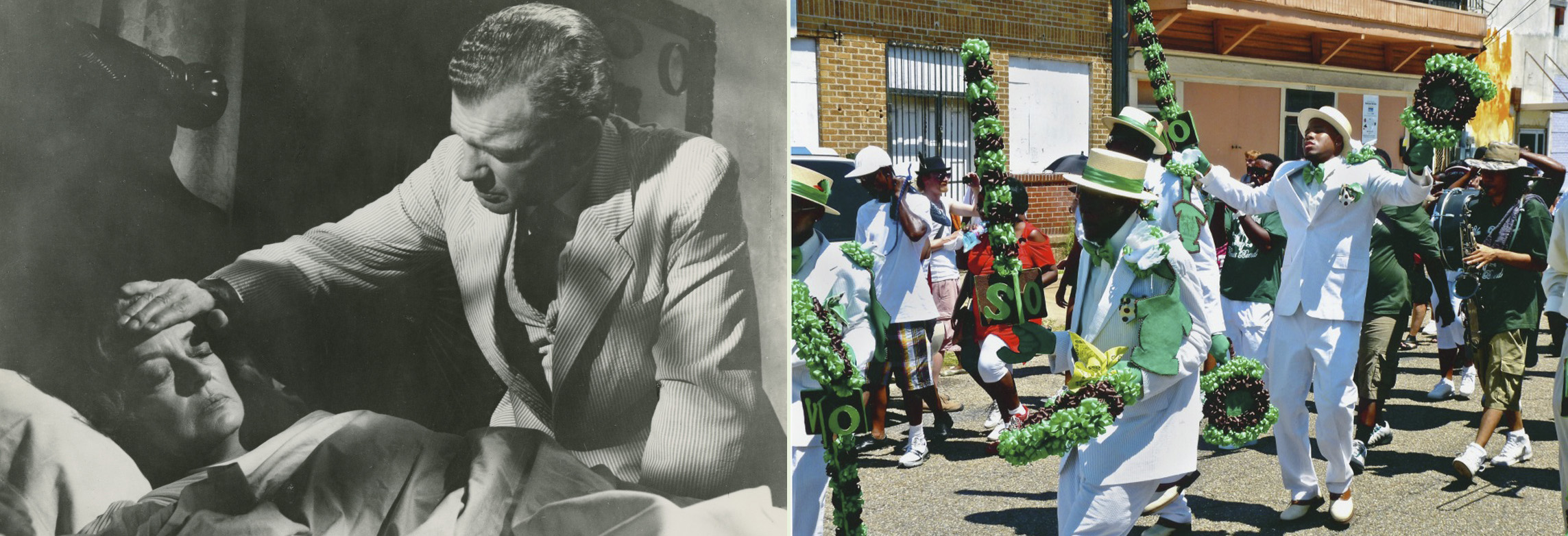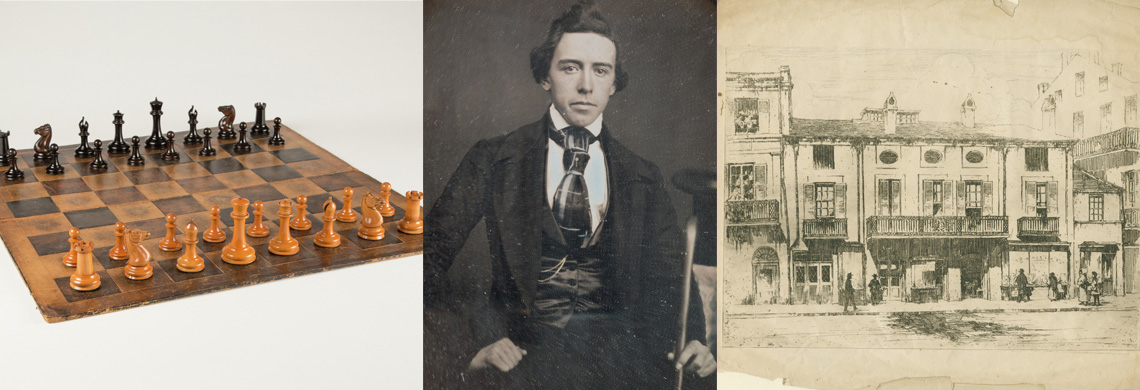The might of the Mississippi River has tested engineers for centuries. Few have approached its challenges more fearlessly than the self-taught James Buchanan Eads, who risked his career and even his life to exploit its potential.
The galleries at 520 Royal Street are a showcase for new and old—from cornerstones of THNOC’s collection to items acquired more recently to populate current exhibitions. Here are six treasures to be found at the newly expanded Historic New Orleans Collection.
It was a hot June day in 1969, when for the first time, black and white kids dove into the Audubon Park swimming pool together, marking a symbolic victory for the civil rights movement in New Orleans.
The puckered fabric has been a staple of summer fashion for generations, but just how did the iconic material come to be?
In the winter of 1857, a frenzy took over the city of New Orleans, and local chess prodigy Paul Morphy was right at the center of it.
Through unusual posters and interviews with two of Tipitina’s co-founders, we take a look back at the club's early years and their quirky promotional materials.
Cataloger Emily Perkins looks at some of her favorite Tipitina’s posters and promotional pieces from the Michael P. Smith Collection
After being hosted for two years in a section of what is now Louis Armstrong Park, the Fest’s growing popularity necessitated a move to the infield of the racetrack at the much larger 145-acre Fair Grounds in 1972.
Late on April 12, 1803, American diplomat Robert R. Livingston hurried home to his Paris lodgings, sat down at his desk, and began writing one of the most extraordinary letters in American history.
When embarking on a building project that encompasses a restoration of an 1816 structure alongside brand-new construction, one may expect a few hiccups, discoveries, and surprises. The process of constructing THNOC’s new exhibition center at 520 Royal Street yielded all three.




















